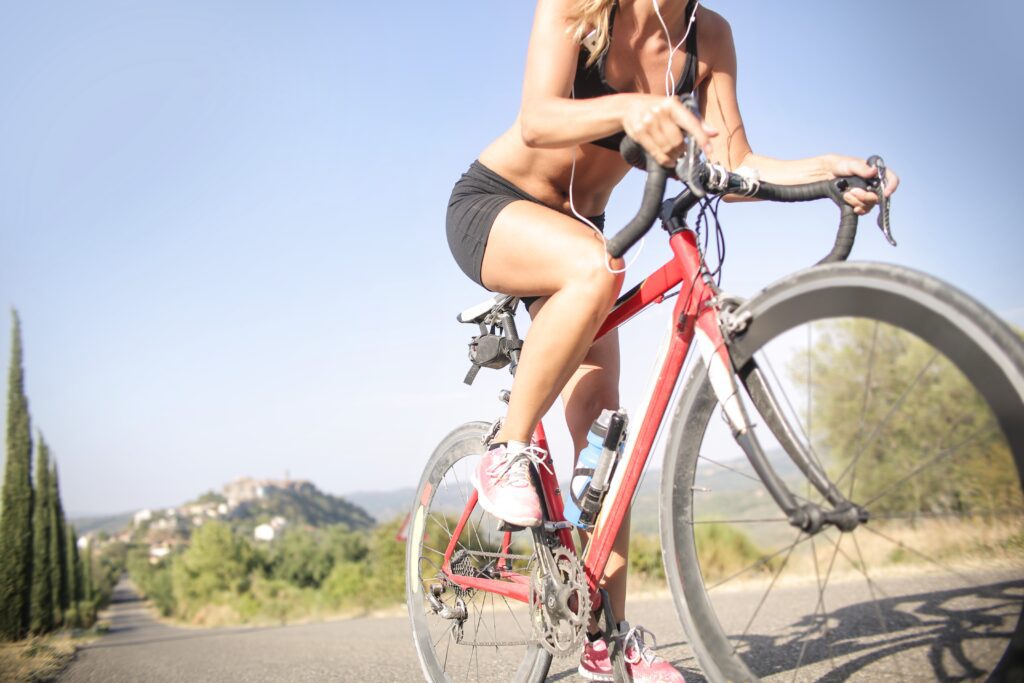Cycling safety is the practice of taking steps to reduce the risk of injury or death while cycling. This includes wearing a helmet, being visible to other road users, obeying the rules of the road, being aware of your surroundings, and riding defensively.
Cycling safety is important for everyone who cycles, regardless of age, experience, or skill level. However, it is especially important for new cyclists, cyclists who ride in traffic, and cyclists who ride in low-light conditions.
This article provides comprehensive cycling safety guides to help you stay safe on the road.
Importance of Cycling Safety:

Cycling safety is of paramount importance, ensuring not just a pleasant ride but also safeguarding your life and the lives of others. Here are some key reasons highlighting the importance of cycling safety:
1. Personal Safety:
Cycling safety measures protect you from accidents and injuries. Wearing helmets, reflective gear, and proper footwear can prevent head injuries and ensure your visibility to motorists.
2. Road Safety:
By adhering to traffic rules and using proper signals, you contribute to overall road safety. Knowing how to interact with other vehicles and pedestrians reduces the risk of accidents.
3. Prevention of Accidents:
Defensive cycling techniques, such as maintaining safe distances and being aware of blind spots, prevent collisions. Being cautious around parked cars and busy intersections reduces accident risks.
4. Health and Well-being:
Ensuring your safety allows you to continue cycling regularly, promoting physical health. Avoiding accidents preserves your mental well-being and confidence on the road.
5. Community Safety:
Responsible cycling positively impacts the community. By following safety guidelines, you set an example for others, creating a culture of safety and respect on the roads.
6. Pedestrian Safety:
Respecting pedestrian crossings and giving pedestrians the right of way fosters a sense of community safety. It reduces the risk of accidents involving pedestrians and cyclists.
How Can I Stay Safe When Cycling?

There are a number of things that cyclists can do to stay safe on the road, including:
Wear A Helmet:
Wearing a helmet is the most important thing that cyclists can do to protect themselves in the event of a crash. Helmets can reduce the risk of serious head injury by up to 85%.
Be Visible To Other Road Users:
Cyclists should wear bright or reflective clothing and use lights at night, especially in low-light conditions. This will help to make cyclists more visible to other road users.
Obey The Rules Of The Road:
Cyclists are subject to the same traffic laws as motorists. This means riding in the same direction as traffic, stopping at red lights and stop signs, and signaling your turns.
Be Aware Of Your Surroundings:
Cyclists should pay attention to traffic, pedestrians, and other hazards on the road. It is also important to be aware of the weather conditions and to dress appropriately.
Ride Defensively
Cyclists should assume that other road users do not see them and take steps to protect themselves. This means riding predictably, avoiding blind spots, and being prepared to brake quickly if necessary.
Be Prepared For Emergencies.:
Cyclists should carry a basic repair kit and a first-aid kit with them on their rides. This will help to ensure that they are prepared for any unexpected events.
Additional Cycling Safety Tips
Here are some additional cycling safety tips:
Use hand signals. Hand signals are a great way to communicate your intentions to other road users.
Be careful around parked cars. Drivers may not see you when they are opening their doors, so it is important to be extra careful when riding around parked cars.
Watch out for road hazards. Be aware of road hazards such as potholes, cracks, and debris. It is also important to be careful when riding on wet or icy roads.
Be respectful of other road users. Cyclists share the road with motorists, pedestrians, and other cyclists. It is important to be respectful of all road users and to follow the rules of the road.
FAQs
1. Is It Necessary To Wear Reflective Clothing During The Day?
Yes, wearing reflective clothing during the day increases your visibility, especially in heavy traffic areas.
2. How Often Should I Check My Bike Brakes?
Regularly check your bike brakes before every ride. Squeeze the levers to ensure they are responsive.
3. Are There Specific Hand Signals For Cyclists?
Yes, cyclists have specific hand signals. To indicate a right turn, extend your right arm horizontally.
4. Can I Cycle On The Sidewalk If There Are No Bike Lanes?
It’s generally safer to cycle on the road, following traffic rules. If there are no bike lanes, ride on the right side of the road.
5. What Should I Do If I Encounter Aggressive Drivers?
Stay calm and composed. Avoid engaging with aggressive drivers. If you feel threatened, find a safe spot to stop and call the authorities.
Conclusion:
Cycling is a fun and healthy activity, but it is important to prioritize safety while on the road. By following the tips outlined in this article, you can ensure a safe and enjoyable cycling experience. Remember, safety should always come first.



